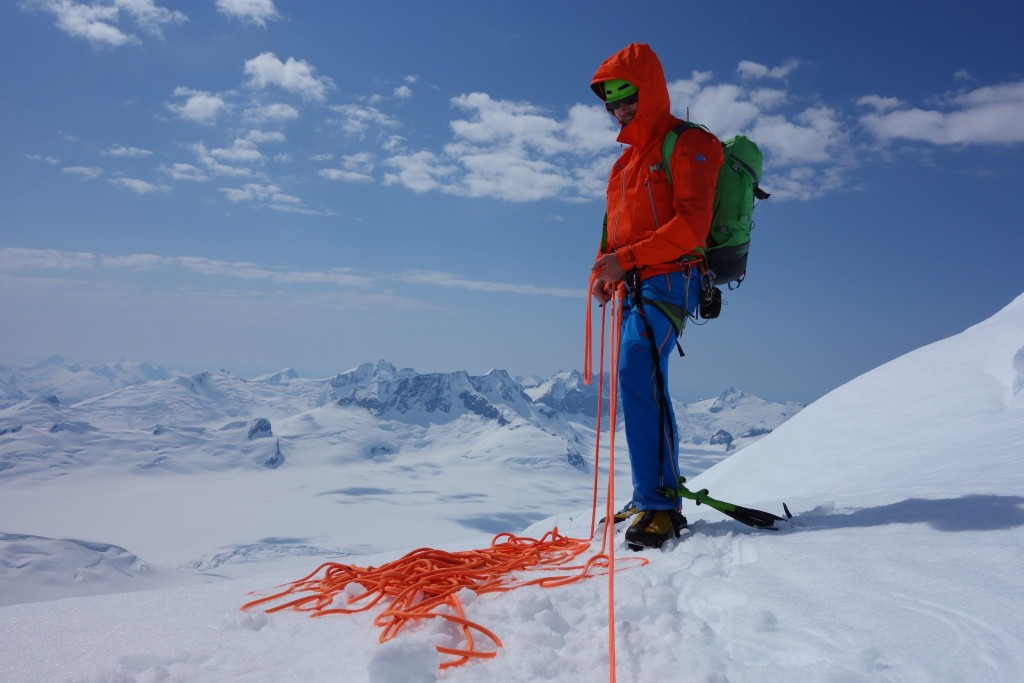New Route on Alaska’s Mount Lucifer
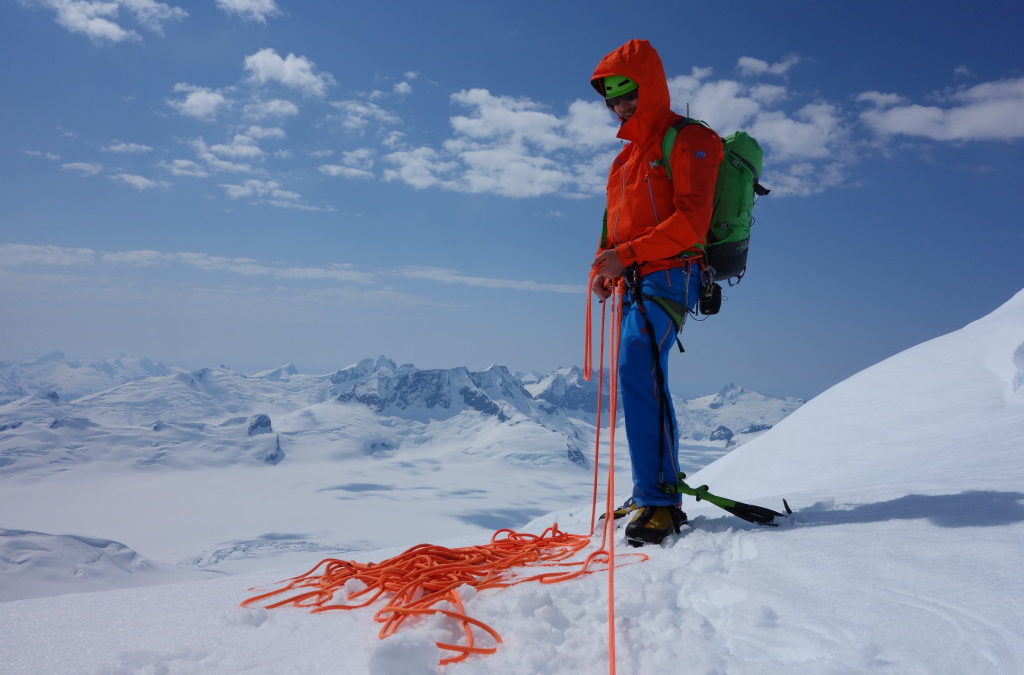
John Frieh has made a number of trips to Alaska’s Stikine Ice Cap and on almost every trip climbs a new route. In May 2015, Frieh was joined by Doug Shepherd for the first ascent of the north face of Mount Lucifer 2,300 metres.
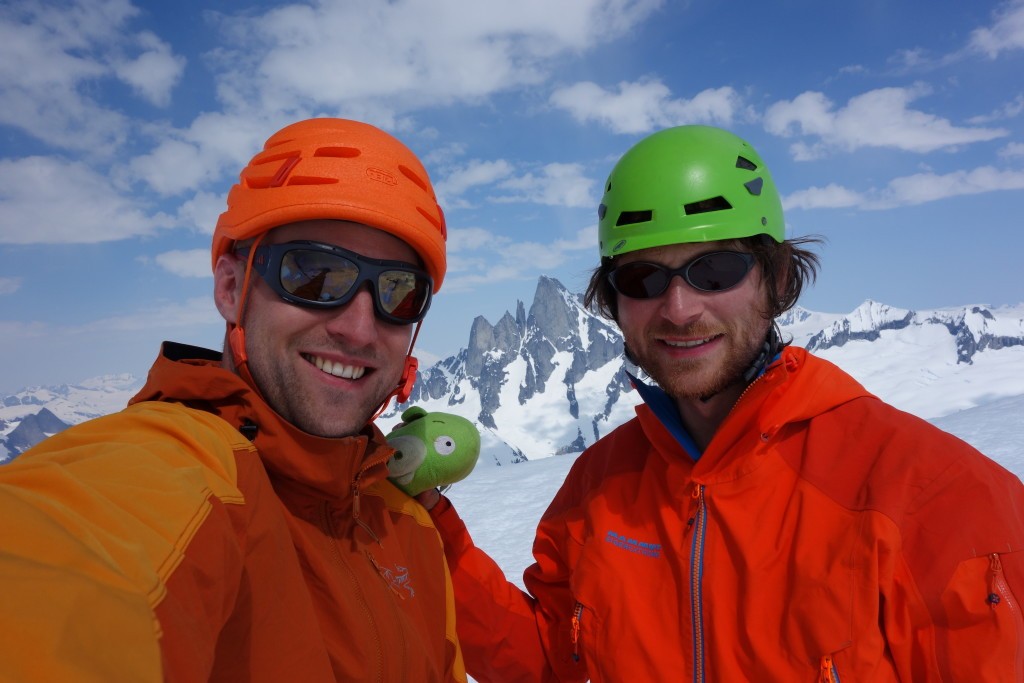
Frieh’s first trip to the Stikine was in 2009 when he made the first ascent of the west ridge of Burkett Needle. “What I saw on that first trip was amazing and I was blown away to find out much of it was unclimbed,” said Frieh.
“As a result, I have returned every year since (minus 2010) to climb something; Lucifer was my fifth first ascent in this part of Alaska.”
In 2014, while approaching the West Witches Tit Frieh spotted, on the other side of what local climbers call “The Cauldron,” a very attractive looking face.
“I took a few photos and made a mental note to keep it in mind when conditions and a weather window coincided,” said Frieh. “I didn’t expect it would be the following year.”
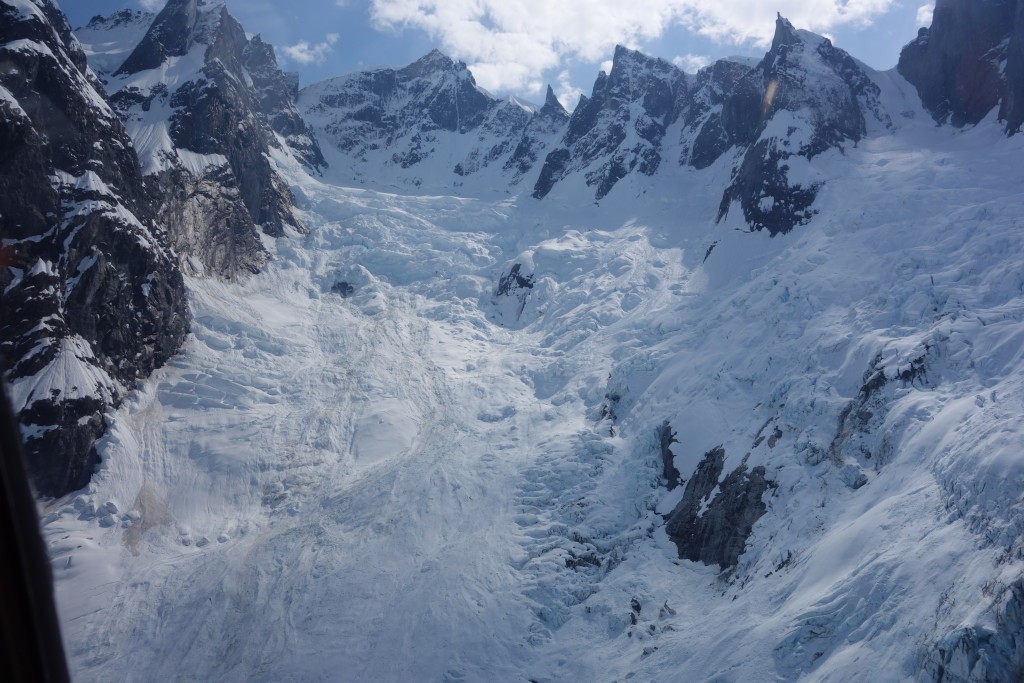
On Thursday May 14, Frieh and Shepherd flew to Petersburg. Later in the day, they helicoptered into the Stikine Ice Cap. “I failed to pack the stove which we did not discover until after we had been dropped off,” said Frieh.
“This likely would have ended the trip right then and there if it not for the warm temps which resulted in some shallow pools on the glacier we were able to get water from. Still, no coffee in my book is more or less an epic.”
The high-pressure was almost too good and temps were above 15 degrees C on the glacier. To keep things safe, they opted for a 2 a.m. departure from camp on the May 15.
“We managed most of the face before sunrise,” said Frieh, “but we found the face slow going with numerous crevasses and sloppy snow in the unusual heat.
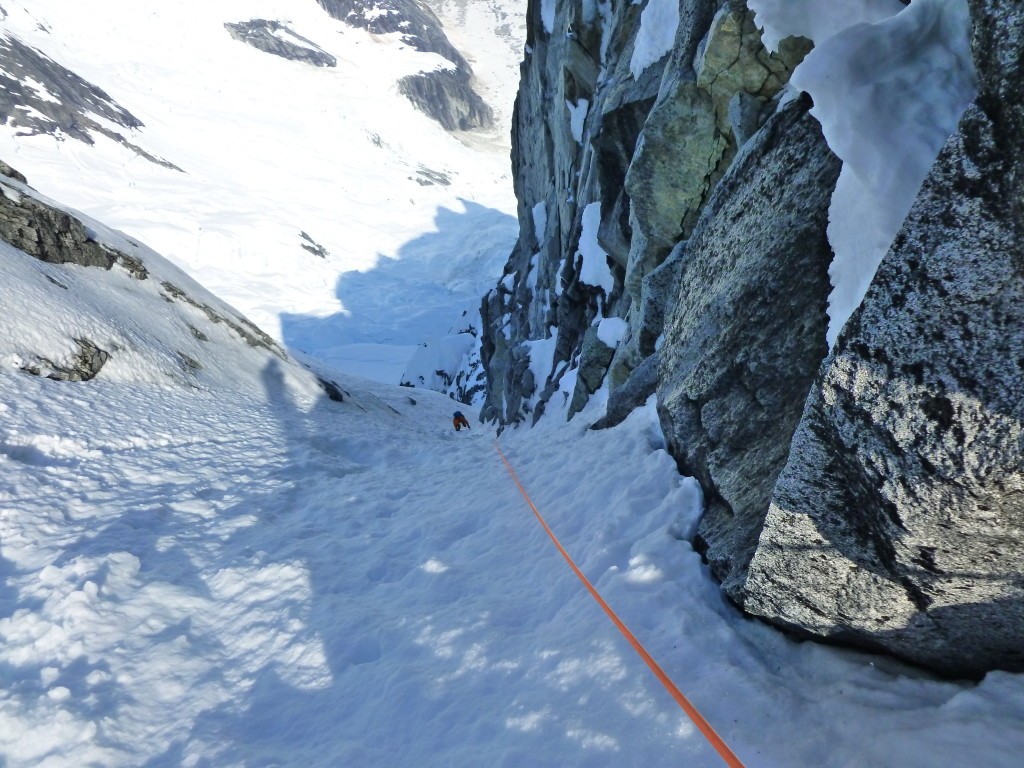
“We were hoping for a direct line up the headwall to the summit, but given the temps and conditions opted for a safer, less direct line off the face climbers left of the summit.”
Frieh and Shepherd named their route Agua Sin Gas III WI4, which in Spanish means “water without gas.” “Usually this is reserved for still water (i.e. not sparkling water) but it happened to also hold true for our situation,” said Frieh.
They climbed the 1,200-metre face in about 12 hours. “We encountered some vertical snow/snice in places, but we found the majority of the terrain to be moderate,” said Frieh. “All in all a good day out.”
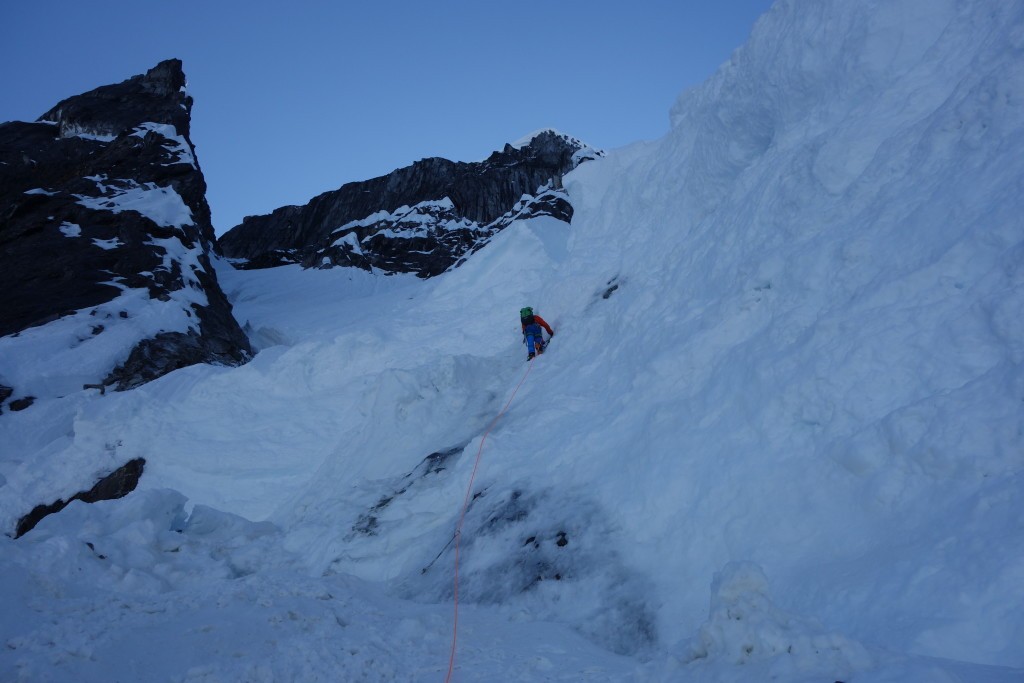
They managed to get picked up on the same day and were back in Petersburg that evening.
Lucifer was first climbed in 1976 by Peter Rowat and Rupert Roschnik via the Patterson Glacier. “I was fortunate enough to track Peter down and get his story,” said Frieh. “So rad to hear about guys getting after it 39 years ago.”
“There’s untapped climbing potential on the Stikine Ice Cap that awaits anyone willing to invest the time and energy,” said Frieh.
